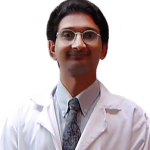Hydrocelectomy
WHAT IS A HYDROCELE, A SPERMATOCELE, AND AN EPIDIDYMAL CYST? A hydrocele is an abnormal fluid collection between the outer tissue layers of the testicle. These tissue layers naturally secrete fluid and when this fluid is not reabsorbed, as it usually would be, a fluid collection or hydrocele forms. The cause of most hydroceles is unknown, although some may be related to trauma, infection, or past surgery. A spermatocele is a cyst-like...
Hernia Repair, Umbilical
Introduction A hernia occurs when an internal part of the body pushes through a weakness in the muscle or surrounding tissue wall. An umbilical hernia appears as a lump near the navel (bellybutton) that may get bigger when your child laughs, coughs, cries or goes to the toilet. It may shrink when your child is relaxed or lying down. Umbilical hernias are very common and affect 10% of infants and young children. They are especially...
Hernia Repair, Inguinal
Introduction A hernia occurs when an internal part of the body pushes through a weakness in the muscle or surrounding tissue wall. Your muscles are usually strong and tight enough to keep your intestines and organs in place, but sometimes they are not, which causes a hernia. What is an inguinal hernia? An inguinal (pronounced “ingwanal”) hernia is the most common type of hernia. The hernia can appear as a swelling in your...
Hernia Repair, Incisional
What Is an Incisional Hernia? An incisional hernia happens when a weakness in the muscle of the abdomen allows the tissues of the abdomen to protrude through the muscle. The hernia appears as a bulge under the skin, and can be painful or tender to the touch. In the case of an incisional hernia, the weakness in the muscle is caused by the incision made in a prior abdominal surgery. An incisional hernia is typically small enough that...
Hernia Repair, Hiatal
Introduction A hiatus hernia means that part of your stomach has squeezed through an opening in your diaphragm and into your chest. The stomach normally sits in the abdomen, underneath a large, thin sheet of muscle called the diaphragm. The opening in the diaphragm that the stomach can push through is called the hiatus. Your oesophagus (tube that carries food to your stomach) passes through the hiatus to reach your stomach. How a...
Hernia Repair, Femoral
Introduction A hernia occurs when an internal part of the body pushes through a weakness in the muscle or surrounding tissue wall. Usually, your muscles are strong and tight enough to keep your intestines and organs in place. However, sometimes they are not, and this causes a hernia. A femoral hernia appears as a painful lump the size of a large grape in the inner upper part of the thigh or groin. The lump can often be pushed back in...

 Dr. Bimal Shah is the senior most General & Laparoscopic surgeon in Mira – Bhayandar with largest series of operations. He also consults at Borivali – Dahisar. He believes in ethical practice & is available at only trust hospitals. He passed out from KEM hospital, Mumbai in 1993 and was a lecturer training newer surgeons & medical students till 1998.
Dr. Bimal Shah is the senior most General & Laparoscopic surgeon in Mira – Bhayandar with largest series of operations. He also consults at Borivali – Dahisar. He believes in ethical practice & is available at only trust hospitals. He passed out from KEM hospital, Mumbai in 1993 and was a lecturer training newer surgeons & medical students till 1998. 






